
Understanding Sales Compensation and Why It Matters
What keeps sales teams motivated? Money, recognition, or something more? A great Salesforce commission calculation plan isn’t just about paying reps – it’s about driving performance, rewarding success, and fueling company growth. However calculating Salesforce commissions manually can be a nightmare. That’s where automation comes in.
Sales compensation includes salary, commissions, and bonuses – designed to push reps toward hitting targets. When structured well, it aligns company success with individual success. Automating the process ensures accurate payouts, saves time, and eliminates disputes.
- The Importance of a Smart Compensation Plan
- Configuring Sales Commission in Salesforce
- Top Commission Management Apps
- 1. Sales Commission Management and Incentive Compensation | Leaptree Incentivize
- 2. CaptivateIQ: Making Commissions 10x Better
- 3. Dinero Commissions
- 4. Incentives SPM
- 5. AgileComp – Supercharged Commissions in Salesforce
- 6. ScoreKeeper -Sales Commission Builder & Opportunity Commission Calculation (2.0)
- 7. QuotaPath – Sales Compensation Management
- 8. Sales Commission and Compensation Plan Design and Management: Smart Incentive
- 9. Sales Commission Management For Salesforce By Commissionly
- 10. Sales commission calculation
- FAQs on Automating Payout Calculations in Salesforce
- Final Thoughts on Optimizing Sales Performance
The Importance of a Smart Compensation Plan
What keeps employees loyal – company culture, career growth, or just a bigger paycheck? The truth is, that pay structure plays a huge role in keeping top performers engaged and motivated. When salespeople feel fairly rewarded, they work harder, close more deals, and stay with the company longer. But when pay doesn’t match their efforts, they start looking elsewhere.
The numbers say it all. According to Salesforce, 64% of sales professionals would consider leaving their job if offered better pay elsewhere. That means companies with weak compensation plans risk losing their best talent, facing high turnover, and missing out on growth opportunities.
To build a strong team, businesses need a clear and fair compensation plan. In the next sections, we’ll break down what makes a great plan and how automation can help companies manage it better.
Insight:
Can a good pay structure really make a difference? Absolutely! A strong compensation plan can boost your team’s performance, while a bad plan can hurt motivation and lower results. When employees feel valued, they get excited to meet their targets. A smart compensation strategy drives success and builds a motivated workforce ready to take on any challenge.
What Sales Compensation Includes
A well-rounded pay structure is essential for motivating your team and driving results. Typically, it consists of two main parts: a base salary and a commission. The base salary provides financial stability, ensuring that team members have a consistent income. On the other hand, the commission adds excitement and incentive; it rewards employees based on their performance. The more you sell, the more you earn!
Bonuses Add Complexity
But there’s more – many employees also receive bonuses. These additional rewards are often tied to specific performance metrics, such as customer satisfaction, reaching quarterly targets, or exceeding goals. This combination of base salary, commission, and bonuses creates a motivating compensation plan that helps drive success and keeps teams engaged.
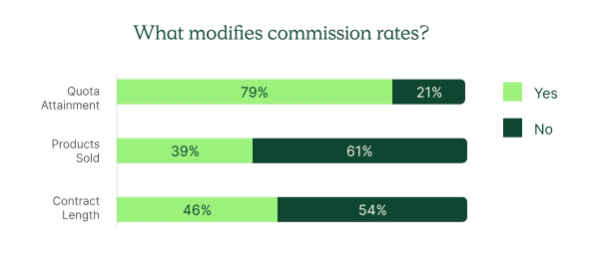
Source: Report Sales Compensation Trends to Know in 2023
In many compensation plans, growth factors play a significant role. Meeting set targets is the primary method for these growth factors, and companies often use multipliers that extend over several years to reward long-term performance.
Different Roles, Different Pay
The pay structure can vary significantly from one role to another. For instance, field sales reps often have a lower base salary but the exciting opportunity to earn much more through reward. This setup not only motivates them to close deals but also encourages a strong drive for success. On the other hand, inside sales reps typically enjoy a higher base salary with a lower commission rate. This balance reflects the unique responsibilities of each role and how they contribute to the company’s growth.
Increasing Business Financial Flexibility
Commission programs offer more than just rewards; they provide essential financial flexibility for businesses. By tying payouts directly to actual sales, companies can adapt to changing market conditions. When sales are strong, reps earn more, but during slower times, businesses aren’t weighed down by hefty fixed salaries. This approach helps companies stay agile and maintain healthy finances, even in challenging periods.
Creating a Competitive Yet Collaborative Environment
What if you could create a workplace where competition fuels collaboration? That’s the power of payout structures! They not only reward individual achievements but also encourage teamwork among sales reps. When team members share strategies and tips to help each other succeed, it fosters a lively environment full of energy and creativity. This blend of friendly competition and cooperation can lead to a dynamic workplace where everyone is motivated to reach new heights together.
Improved Customer Experience
A well-designed pay structure can significantly shape the customer experience. When employees are motivated to excel with Salesforce benefits for employees, they provide exceptional customer service that keeps clients coming back. Since profits often rely on strong customer connections, prioritizing customer satisfaction not only drives immediate growth but also fosters lasting loyalty. Satisfied customers are more likely to return and recommend your business, creating a powerful cycle of repeat business and referrals.
Salesforce stands out as one of the leading CRM platforms, offering tools that help manage customer relationships and improve internal operations. Many businesses seek to understand how to effectively calculate earnings from deals, and it simplifies this process.
Calculating and managing referral-based earnings in CRM often involves creating custom fields and calculations. With its flexibility, Salesforce allows businesses to set up these custom fields, formulas and processes easily. You can even create triggers when needed, making it simple to track and manage payouts while maintaining a strong focus on providing excellent customer service.
Configuring Sales Commission in Salesforce
The CRM doesn’t have a built-in feature for payout calculations, but its flexible tools make setup easy. With the right commission software, Salesforce users can automate earnings tracking, ensure accuracy, and streamline the payout process. By creating custom fields and formulas, you can track performance metrics and calculate payouts accurately.
This approach ensures your team is rewarded fairly, motivating them to reach their targets. With a little customization, Salesforce can effectively manage earnings.
Step 1. Navigate to Setup, Object Manager, and select Opportunity.
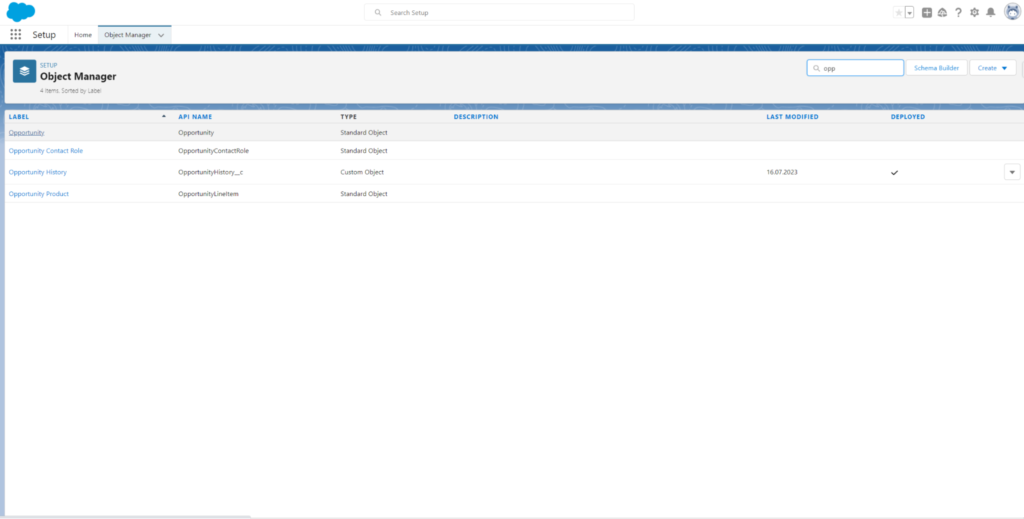
Step 2. Create custom fields in the Opportunity object to capture the commission rate and the calculated commission. We will need a field for Rate and Commission.
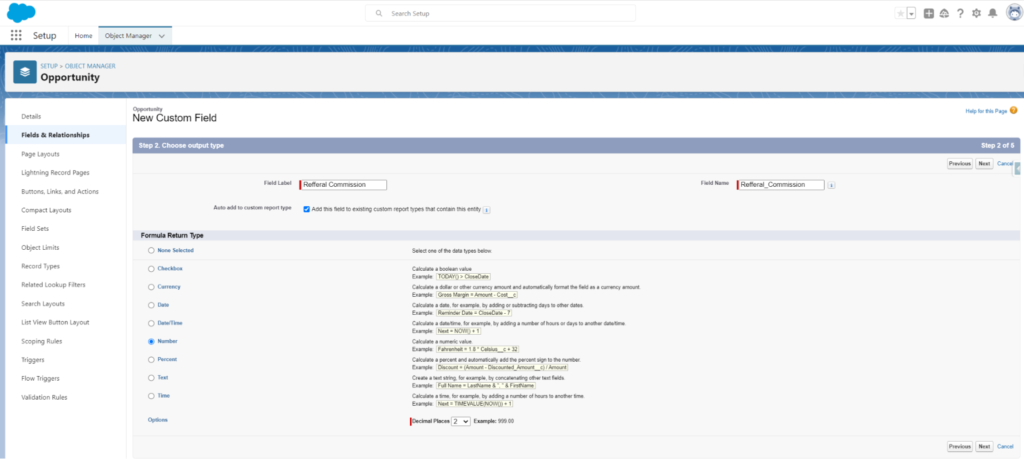
Commission Rate will be a numeric field, Commission instead should be a formula field.
Step 3. Create a formula field to automatically calculate the commission based on the opportunity amount and the commission rate.
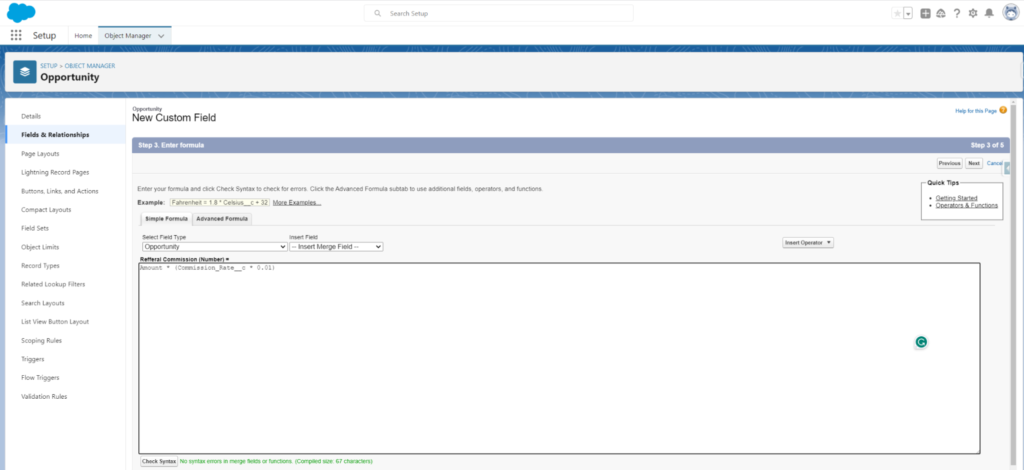
Insight:
If your company has a straightforward reward structure, you’re in luck! The built-in capability works best for companies with simple arrangements. In the Dev Console, you can quickly change the Commission Rate field for every existing Opportunity record. This ensures your team is rewarded fairly and stays motivated to reach their targets. With a little customization, the CRM can effectively manage payouts.
// Query all Opportunities
List<Opportunity> oppsToUpdate = [SELECT Id, Commission_Rate__c FROM Opportunity];
// Loop through each Opportunity and update the Commision_Rate__c field
for(Opportunity opp : oppsToUpdate) {
opp.Commission_Rate__c = 5;
}
// Bulk update all Opportunities
update oppsToUpdate;
Hit the Execute button, and Salesforce will set the Commission Rate for all Opportunity records as 5.
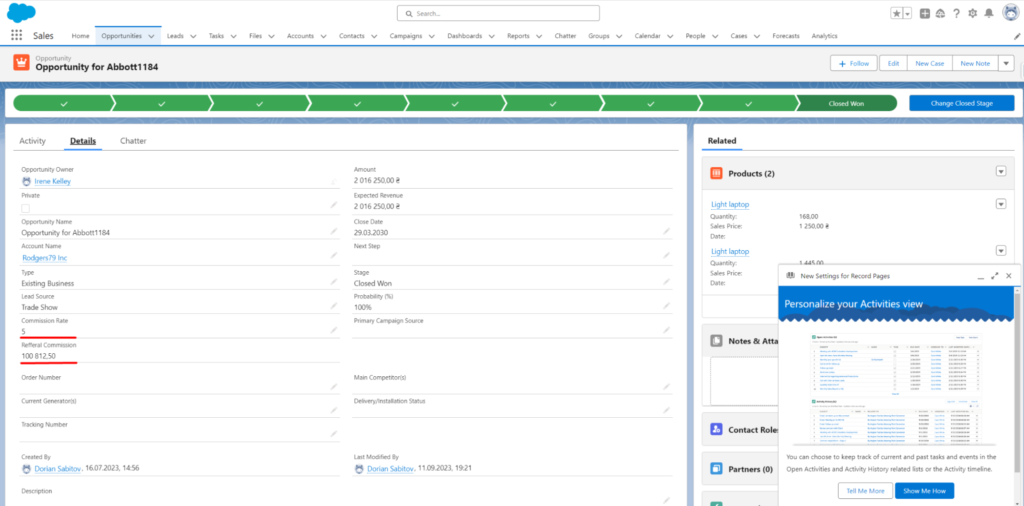
Top Commission Management Apps
Looking for the best tools to handle payouts in Salesforce? We’ve picked top Salesforce commission software solutions that help with calculations, ensure accurate payouts, and keep teams motivated. These solutions were chosen based on user reviews, features, and reliability to make reward management easier. Let’s take a look!
1. Sales Commission Management and Incentive Compensation | Leaptree Incentivize
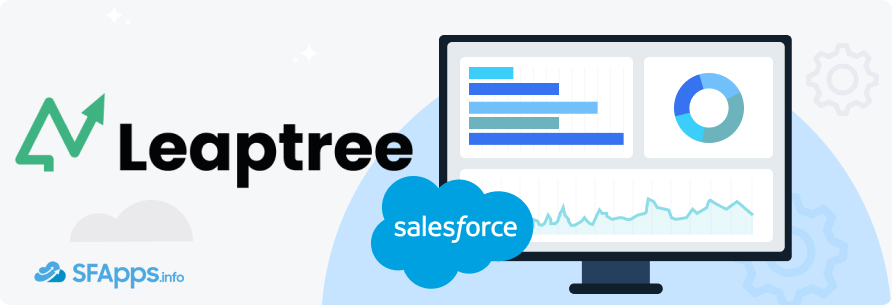
Overview:
Leaptree Incentivize is a 100% native SF app designed to help businesses manage payouts with ease. It automates calculations, reduces errors, and gives teams real-time insights into their earnings. With no-code setup and powerful reporting, companies can save up to 90% of the time spent on earning processing.
Key Features:
- Build and customize rewarding plans easily
- Real-time dashboards for your team
- Accurate calculations to minimize payment errors
- “What-if” modeling for future payout plans
- Supports multiple languages
Rating: 5.0 ⭐⭐⭐⭐⭐ (Average Rating)
Pricing: Starts at $39 USD per user per month
Link to the app: Leaptree Incentivize
Insight:
Pay attention to the requirements of the App.
2. CaptivateIQ: Making Commissions 10x Better
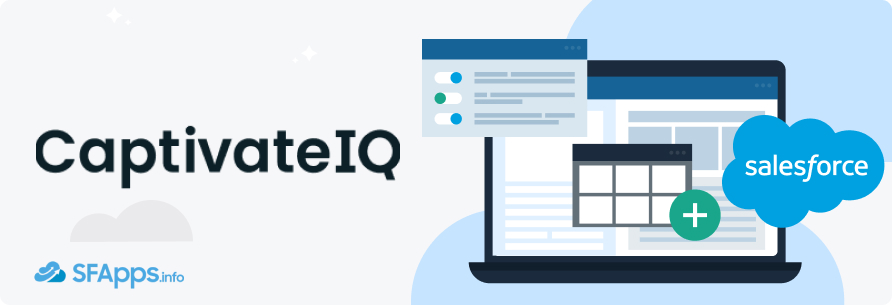
Overview:
CaptivateIQ is a powerful reward management app designed to handle even the most complex rewarding plans. It centralizes data, automates calculations, and provides real-time insights, helping businesses streamline Salesforce commission tracking and boost motivation.
Key Features:
- Real-time payout calculations across teams
- Customizable dashboards for reps to track earnings
- AI-powered insights to optimize compensation plans
- “What-if” calculator to estimate commissions on deals
- Seamless integration with Salesforce and other data sources
Rating: 5.0 ⭐⭐⭐⭐⭐ (Average Rating)
Pricing: Starts at $60 USD per user per month
Link to the app: CaptivateIQ
3. Dinero Commissions
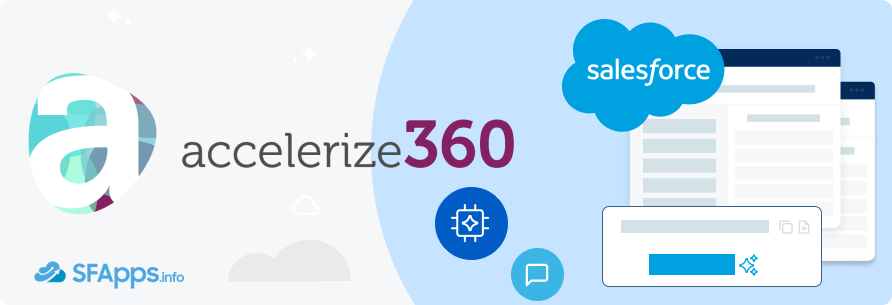
Overview:
The app is designed to integrate seamlessly with your environment. With this app, you can build complex payment plans and provide real-time feedback to your team on their progress without the need for syncing data or logging into separate systems.
Key Features:
- Built exclusively for Salesforce, keeping your business rules and data in one place
- Real-time visibility to motivate your team and track performance
- Flexibility to handle various reward structures, including recurring payments and splits
- Customizable components to keep your team engaged
Rating: 5.0 ⭐⭐⭐⭐⭐ (Average Rating)
Pricing: $20 USD per user per month
Link to the app: Dinero Commissions
4. Incentives SPM
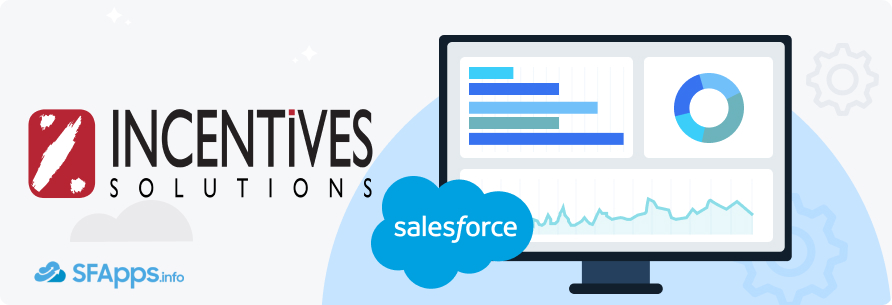
Overview:
Incentives SPM by Incentives Solutions Ltd is a cutting-edge platform for managing payouts and performance. This app integrates seamlessly with the CRM, allowing you to enrich your opportunity reports and dashboards with valuable payout data. With Incentives SPM, you can simplify your operations and gain better control over your payments.
Key Features:
- Enhanced dashboards with integrated reward data
- Employee-centric dashboards for actionable insights
- Predictive analysis tools to simulate the outcomes
- Tools to help grow sales and control your payout budget
Rating: 5.0 ⭐⭐⭐⭐⭐ (Average Rating)
Pricing: $30 USD per user per month
Link to the app: Incentives SPM
5. AgileComp – Supercharged Commissions in Salesforce
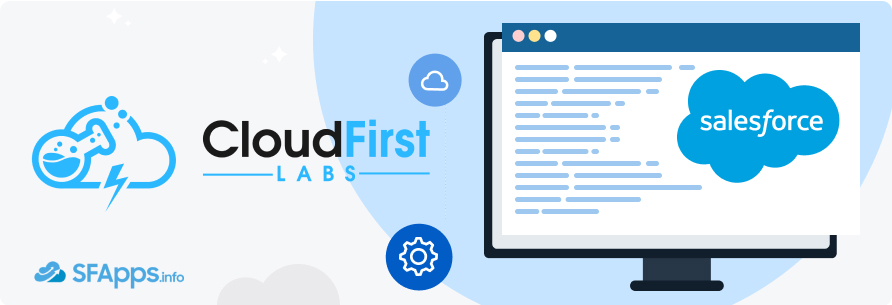
Overview:
AgileComp by Cloud First Labs is designed to meet complex needs within CRM. This powerful app simplifies reward management, allowing you to define your own payout periods and implement flexible attainment tiers. With AgileComp, your team can quickly access their statements and dashboards, enhancing their experience and productivity.
Key Features:
- Configure workflows and automate complex compensation processes
- Build calculations from various objects and external data sources
- Support for multiple commission splits to reward collaboration
- Quick adjustments and overrides for custom reward methods
Rating: 5.0 ⭐⭐⭐⭐⭐ (Average Rating)
Pricing: $33 USD per user per month (Discounts available for nonprofits)
Link to the app: AgileComp
6. ScoreKeeper -Sales Commission Builder & Opportunity Commission Calculation (2.0)
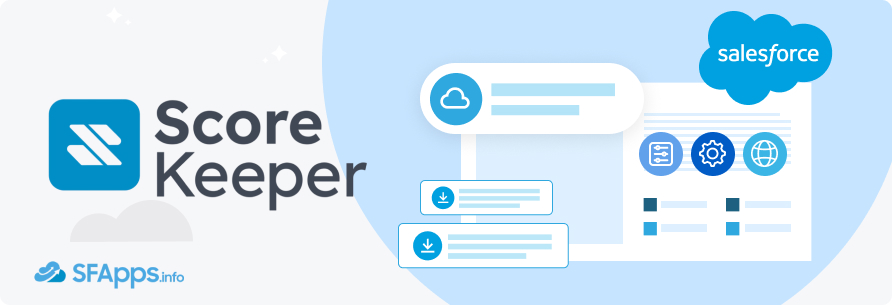
Overview:
ScoreKeeper by ScoreKeeperTech LLC is a powerful app designed to automate payouts directly within the system. With ScoreKeeper, you can easily configure compensation plans and provide real-time payouts based on opportunities. The app allows you to build complex payout structures using various conditions and types, whether it’s a percentage or a flat fee.
Key Features:
- Real-time transactional calculations
- Fully native Salesforce app, integrating seamlessly with Accounts, Opportunities, and Products
- Flexibility to create and manage custom compensation plans
- Eliminate the need for spreadsheets with automated pay reports
Rating: No Ratings
Pricing: $29 USD per user per month (Free trial available for 14 days)
Link to the app: ScoreKeeper
7. QuotaPath – Sales Compensation Management

Overview:
QuotaPath is a powerful app designed to automate and manage payouts for high-performing organizations. With QuotaPath, you can bring transparency and accountability to your compensation process, making it easier to track variable compensation and efficiently pay your team. This app is ideal for businesses looking to simplify their reward management as they scale.
Key Features:
- Automate calculations for accurate payouts
- Comprehensive earnings dashboards for real-time visibility
- Customizable compensation plans to fit your business needs
- Easy onboarding for new team members with streamlined processes
Rating: No Ratings
Pricing: The Essential Plan is $25 USD per user per month, the Growth Plan is $35 USD per user per month, and the Premium Plan is $45 USD per user per month, with a free trial available for 14 days.
Link to the app: QuotaPath
8. Sales Commission and Compensation Plan Design and Management: Smart Incentive
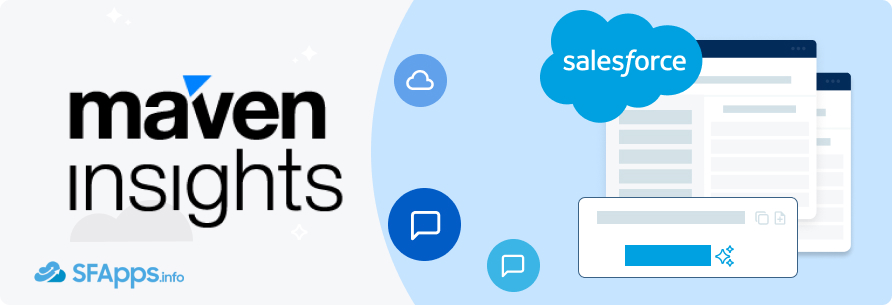
Overview:
Smart Incentive by Maven Insights and Solutions DMCC is a comprehensive tool for designing and managing compensation plans. This app helps you create effective incentive structures from scratch, ensuring that your team remains motivated and productive. By using Smart Incentive, you can boost employee rewards and recognition while aligning compensation with business goals.
Key Features:
- Design and fine-tune your sales incentive plans efficiently
- Simulate different scenarios to understand the impact of your decisions
- Evaluate performance, costs, and potential earnings
- Detailed insights into budget management and employee fairness
Rating: No Ratings
Pricing: Monthly subscription is $1,499 USD per user/month, with discounts available for quarterly ($999), semi-annual ($899), and annual ($825) subscriptions. Free trial available for 30 days.
Link to the app: Smart Incentive
9. Sales Commission Management For Salesforce By Commissionly
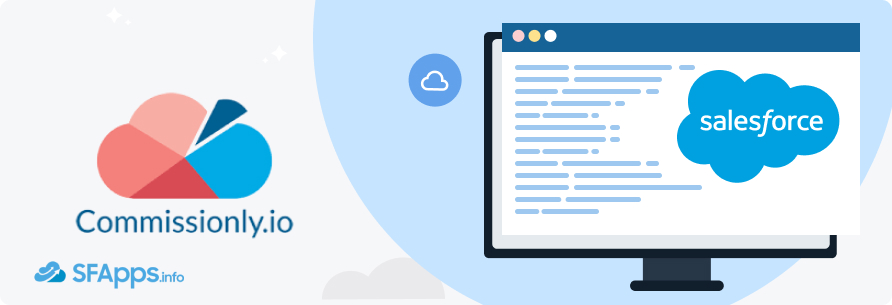
Overview:
The tool offers an intelligent solution for managing payouts within the CRM. This app is designed to help businesses pay and motivate effectively while catering to their unique needs. With Commissionly, you can streamline the Salesforce commission calculation process and eliminate errors, allowing your team to focus on achieving their targets.
Key Features:
- Quick setup and customization to meet your specific business requirements
- Seamless integration with the system and other CRM and accounting software, including HubSpot, Xero, and QuickBooks
- Real-time transparency into individual performance to keep sales reps engaged
- Dynamic filters for easy mapping of company, opportunity, and product objects
Rating: No Ratings
Pricing: Starts at $150 USD per company per month, with tiered pricing available for monthly and annual subscriptions.
Link to the app: Commissionly
10. Sales commission calculation
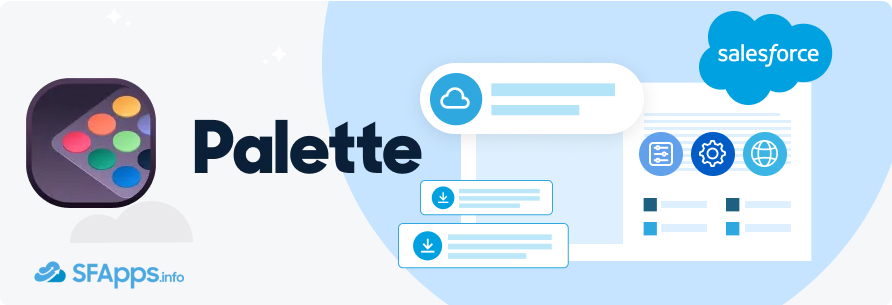
Overview:
PaletteHQ’s app is designed to help finance teams efficiently manage and optimize payouts. With this powerful tool, you can stop wasting hours on error-prone spreadsheets and start automating your payout calculations. The app allows you to track performance and quota achievements seamlessly.
Key Features:
- Centralized data for a single source of truth
- Complex earnings plan designer to set up tailored calculations
- Real-time performance dashboards for visibility and transparency
- Tools to extract critical insights for optimizing the structures
Rating: No Ratings
Pricing: $30 USD per user per month (minimum of 15 seats, totaling $590 per month, with no setup fees)
Link to the app: Sales Commission Calculation
FAQs on Automating Payout Calculations in Salesforce
1. How does payout calculation automation work?
It automates the process by using predefined rules and criteria to calculate payouts based on your performance data. You can customize these rules to fit different compensation structures, whether it’s flat rates, tiered rates, or bonuses based on deal size or revenue. By integrating these calculations with real-time data, Salesforce ensures accurate assessments and real-time calculations. This automation simplifies your compensation process, reducing errors and saving you time!
2. Can payouts be automated effectively with Salesforce?
Absolutely! The CRM is equipped with robust tools that allow you to tailor automation to fit various payout structures and complex calculations. Whether you’re using built-in features or integrating specialized apps from AppExchange, you can automate everything from performance tracking to calculating and distributing commissions. This means greater accuracy, increased transparency, and timely rewards – key factors in keeping teams motivated and engaged.
3. What are the best practices for automating payouts?
To make the most of your automation efforts, follow these best practices:
- Clearly Define Compensation Plans: Start by outlining the rules of your compensation plans, ensuring they align with your business goals and are easy for your team to understand.
- Integrate Seamlessly with Data: Make sure your compensation calculations are closely linked with tracking systems to capture all the necessary data accurately.
- Maintain Flexibility: Your compensation plans should be adaptable to changes in your business strategy or market conditions.
- Ensure Transparency: Use dashboards and reports to give everyone insight into how compensation is calculated and distributed.
- Regularly Review and Adjust: Keep an eye on the effectiveness of your compensation plans and adjust them as needed based on feedback and evolving business needs.
- Leverage Automation Tools: Take advantage of automation tools and third-party apps to handle complex calculations efficiently.
4. How can you develop a payout plan that supports automation?
Creating an effective Salesforce plan involves several key steps:
- Assess Business Objectives: Align your compensation plan with your overall targets and business goals.
- Define Clear Metrics: Establish measurable metrics that will trigger commission payments, like quotas or specific revenue targets.
- Choose the Right Tools: Utilize Salesforce’s native features or select a suitable third-party app from AppExchange that fits your company’s needs.
- Automate Data Collection: Ensure all necessary data for rewarding calculations is captured automatically, like transactions and customer interactions.
- Test and Iterate: Before launching your compensation plan, thoroughly test it to ensure accurate calculations and proper functionality. Keep refining it based on real-world use and feedback.
- Train Your Team: Provide training for your team and the administrators managing the compensation plan, so everyone understands how the system works and how to maximize their earnings.
5. What are the common challenges in automating the compensation?
Some challenges you might encounter include integrating data from multiple sources, ensuring accurate and timely calculations, and managing complex Salesforce commission structure. Addressing these challenges requires thoughtful planning, open communication, and the right tools to make your automation process as smooth as possible.
Final Thoughts on Optimizing Sales Performance
Keeping your team motivated and ensuring they get paid accurately is key to business success. A clear and efficient payout system removes confusion, reduces mistakes, and saves time. Instead of relying on spreadsheets, companies can use smart tools to automate calculations and provide real-time insights. This makes it easier to manage payouts and lets teams focus on selling, not chasing numbers.
With the right app or Salesforce analytics tool, tracking earnings becomes effortless. Teams get instant updates, managers can make better decisions, and everyone benefits from a more transparent and fair system.
Recap of the Top Solutions for Managing Earnings
- Leaptree Incentivize
A native Salesforce app that automates earnings tracking, saving businesses hours of manual work. It calculates commissions based on real-time performance data and ensures accurate payouts. - CaptivateIQ
Handles complex payout structures, making it easy to track payouts and keep teams motivated with clear insights. It offers customizable commission plans, automated workflows, and detailed reporting for managing incentive programs. - Dinero Commissions
Connects directly to Salesforce, helping businesses manage payment plans with real-time updates. It tracks commissions, automates calculations, and ensures sales teams receive accurate and timely payouts. - Incentives SPM
Simplifies payouts by adding performance data to interactive dashboards. It provides visibility into sales incentives, allowing businesses to track achievements, forecast earnings, and adjust commission plans. - AgileComp
Supports flexible payout structures, allowing businesses to track earnings in a way that fits their needs. It syncs commission data in real time and adapts to different compensation models. - ScoreKeeper
Automates earnings calculations and provides real-time payout updates. It reduces manual errors, ensuring accurate commission tracking and clear reporting for sales teams. - QuotaPath
Helps businesses track and manage rewards with transparency and ease. It integrates with Salesforce and other CRMs, allowing sales teams to see their commissions, set goals, and track performance. - Smart Incentive
Designed to create and manage fair, goal-driven payout plans. It automates commission structures based on predefined rules, helping businesses manage incentives efficiently. - Commissionly
An easy-to-use tool for automating earnings and gaining full visibility into performance. It generates commission reports, supports multi-tiered payout structures, and helps businesses manage payments. - PaletteHQ’s Earnings Tracker
A finance-friendly tool that centralizes payout data and provides real-time reports. It organizes commission workflows, reconciles payments, and helps businesses stay compliant with financial policies.
Choosing the Right App
The best app for your business depends on your needs. Whether you’re managing complex payouts, automating earnings, or improving visibility, these tools can help.
By using a specialized app, you can cut down on manual work, reduce errors, and keep your team engaged. A good system means fewer headaches, faster payments, and a team that stays focused on selling. Investing in the right tool will make tracking earnings easier and help your business grow.

Dorian is a 6X Certified Salesforce Developer and Administrator with a start in the IT world as a CRM Admin in 2020. Since diving into Salesforce in 2021 via Trailhead and Focus on Force, he has achieved a Ranger Rank, earned several Superbadges, and bagged certifications including the Salesforce Certified Administrator, Platform App Builder, Associate and Platform Developer I by 2023. In 2024 he also became Salesforce Certified AI Associate and earned Certified AI Specialist Certification in 2025. Dorian is very keen on continuous learning, always looks for fresh ways to improve his knowledge. He enjoys running, boxing, kickboxing and reading diverse kinds of books in his free time.


 Previous Post
Previous Post
One Response to “How to Automate Salesforce Sales Compensation Counting”